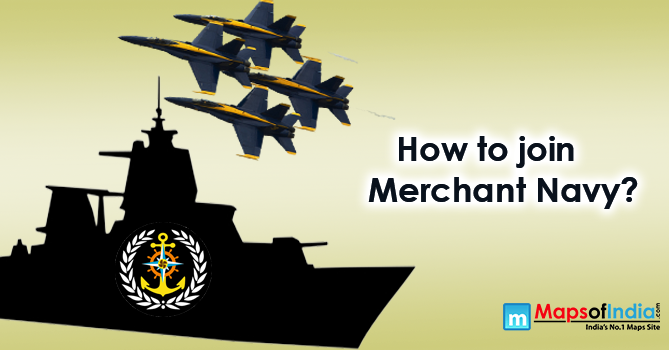The idea of travelling various countries, rewarding money, donning a uniform, calling oneself an officer comes into the picture when the path to Merchant navy takes place. It sends the pride and maturity with handling the responsibility of running a multi-million dollar ship, including cargo, and running the workforce behind it.
It is the foundation of exchange with various countries, passing freight worldwide. The merchant ships deploy numerous workers to transport and deliver goods, beginning with one nation then moving onto the next. The unavailability of the merchant navy will have a crushing stop as it’s a large part of the import-export business.
Passenger ships, Cruise lines, Dry, liquid, Gases carrying ships, Offshore support vessels and any other ships placed for commercial business purposes except Naval Ships are known as Merchant Navy.
Eligibility criteria and requirements for Merchant Navy
a) One should have cleared 10th grade to join Merchant Navy as a GP Rating
b) He/she should have passed 12th grade with Science stream to take the position as Deck officer or Marine engineer in Merchant Navy
c) Next course comprising 3 to 4 years needs to be accomplished in any Merchant Navy academy
d) Science graduates, mechanical diploma holders and mechanical engineering graduates can also apply to join the Merchant navy
Following are the ways to join the Merchant navy
a) Admission happens through an entrance called AIMNET (All India Merchant Navy Entrance Test) ahead of a screening test and an important written examination.
b) Post clearing the test, there is an interview round and a medical test.
c) One also needs to accomplish a ship-training course before employment. It is generally a short-term course where the candidates are taught fundamental security concerns of voyaging.
One can also prefer to become a deck officer or Marine Engineer as there are two departments on board ships, including the Deck department and Engine department.
1) Deck Department: Captain, though he is from the deck department, he is also the ship’s supervisor. Three deck officers comprise the Chief Officer, Second Officer, Third Officer, and one or two trainee cadets and Crew members. The officer rank in the deck department begins as Cadet. This department is responsible for operating the ship, maintenance of deck, cargo holds, tanks, cargo loading, unloading, and other related activities.
The deck department is responsible for the day to day maintenance of the ship, such as chipping, painting, stores, ballasting-deballasting. They also maintain the fresh water on board. Their primary responsibility is to ensure that the cargo reaches from one place to another safely. They plan the voyage and make sure to reach the port of destination within the stipulated time. The Cadet, after his exams, becomes Third Officer whose primary job is to maintain the Life-Saving Apparatus and Fire Fighting Apparatus. Then the Third Officer is promoted to the Second Officer, who plans the ship’s voyage and assures that all the essential navigational charts and essential meteorological information are updated. The Chief Officer is the head of the department and is responsible for all the deck officers and crew. Other than the above mentioned, all three officers have 8 hours of navigational watch on the Navigation Bridge. It is divided into two shifts of 4 hours each to avoid exertion.
2) Engine Department: Chief Engineer is the head of the engine department, and under his supervision, there are three engineers, namely the Second, Engineer, Third Engineer, Junior Engineer and one or two trainee cadets and Crew members. The Engineer rank begins as Cadet or Junior engineer. The engine department is responsible for the functioning and proper structure of all the ship’s machinery, such as the Main engine, diesel generators, boiler and other types of machinery.
Moreover, the Engineering department runs the machines that keep the ship in swift action from the propulsion machinery, the engine room refrigeration units, ship air conditioning and deck machinery. Although, there is an electrical engineer to assist with the electrical jobs on board. They supervise all of these machines by keeping an eye on the engine rooms and maintain any problem effectively and adequately so that the ship may freight on the vital journeys the Merchant Navy asks for. This department functions in a hierarchical way and officers may see the growth with experience. After cadetship, one will approach a ship as the third Engineer, and the responsibilities will be helping the second Engineer and working on the electrical systems and machinery. Second Officers monitor each day’s duties of the staff and engine crew. The First (or Chief) Engineer is the supreme authority in the department for allowing activities and contemplating on engineering tasks aboard the ship.
3) Galley/Steward/Kitchen Department: This department emphasises on people aboard, including passengers and crew. They supervise the assistance process to make and serve the food and maintain all aspects of the living and eating quarters, linens and furniture. On passenger ships, they are the staff members that work closely with the guests and manage their needs.




